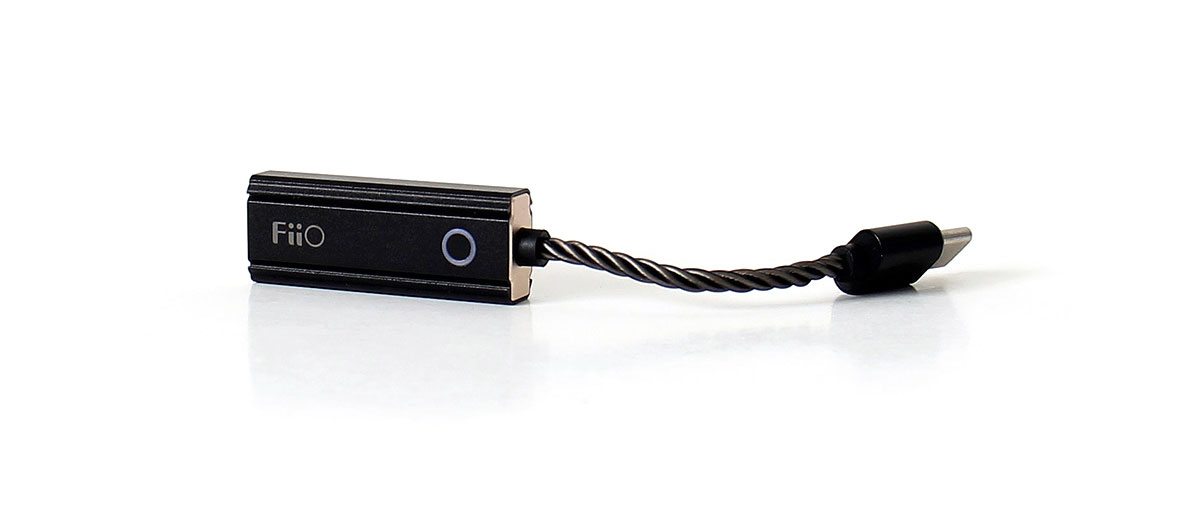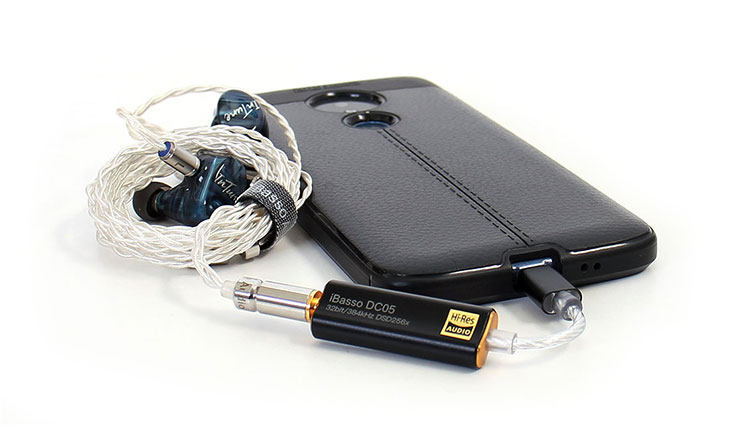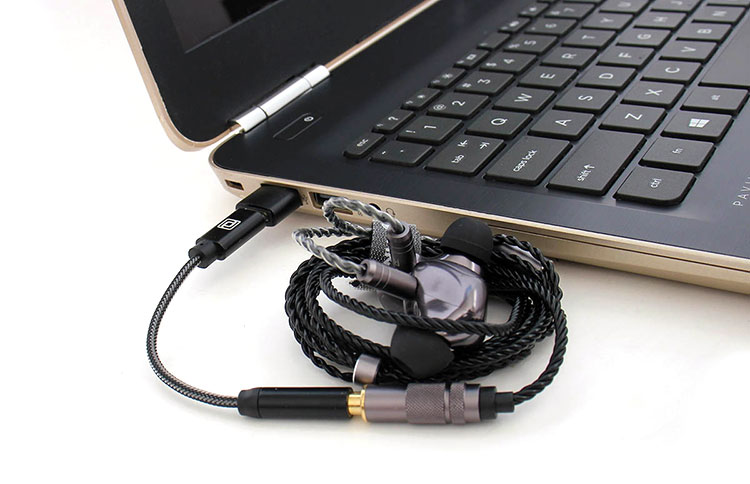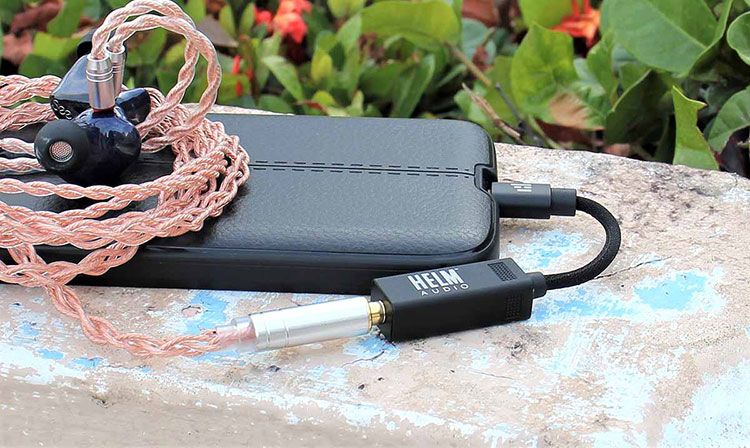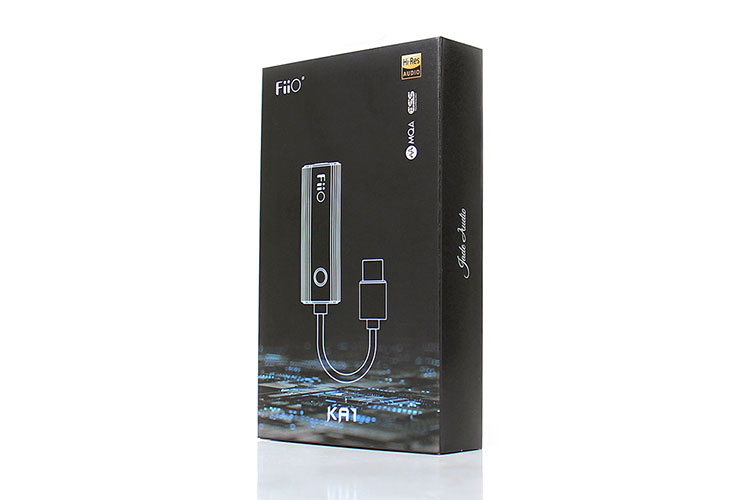Select Comparisons
iBasso DC05
$69.00
Technical
The iBasso version of the KA1 is the DC05 which is downsized from their previous model the DC04, just as the KA1 is downscaled from the KA3. Do you follow me? Actually, both models are very similar and have an attached cable, finished in a black matte, with gold-colored end caps. Need I say more?
Although there was a downscale the DC05 doubles up on DAC chips which justified the extra cost. Dual ESS Sabre ES9219C chips sit inside the DC05 shell and combined can handle basically the same basic digital formats as the KA1 but the benefit is more processing power.
Besides the slightly higher format capability, I think the most obvious difference between these two dongles is with their maximum power output which on the DC05 is rated at 140mW at the same 32 Ω and 2V at 300Ω and using a similar 3.5mm connection.
The KA1 is rated at 45mW max and 1.2V but it seems FiiO went with a safe tuning and limited the ESS chip so it will never clip. Looking at the ESS spec sheet one could easily find that the chip is capable of more power output capacity that can equal the chip inside the DC05 and can even handle higher bit rates, especially on DSD.
Design
These two dongles are very similar and share an all-metal shell, matte black finish, gold end caps, and an attached wire on the USB-C input side. They both are similarly sized also and just some small details distinguish them.
One of their obvious visual differences is with the LED implementation. The DC05 uses the more traditional exposed LED through a small opening at one end cap but I like the KA1 LED best due to its soft and subtle glow plus its difference indicates someone gave it some further thought.
Performance
Tonality wise the DC05 has a slightly warmer general character. The only warmth I heard within the KA1 was with lower frequency male vocals but the DC05 presents that character from the low frequencies and all the way into the midrange section.
Power-wise the DC05 pulls itself to the front of the line and has more driving power not only in the wattage category but also has a higher 2V output capacity although the ES9281AC Pro is supposedly capable of the same output amount.
It seems the FiiO KA1 has better technical capabilities far as imaging goes but the DC05 outperforms the KA1 slightly due to the higher power output but it comes at the cost of slightly higher levels of power consumption plus you also have to consider the slightly higher price tag.
Periodic Audio Rhodium DAC
$49.99
Technical
If your particular preference requires something small and almost inconspicuous then the Periodic Audio Rhodium DAC must be given some light and considered a good candidate.
There are similar-looking models out there like the Zorloo Ztella but unlike the more common metal block style dongle DAC, the Rhodium hides all the electronics within the USB connector itself making the Rhodium DAC the smallest by far in this comparison.
Another twist from the common dongle DAC implementation is that Periodic Audio went with a Realtek ALC5686 SoC which is a chip that measures 6mm squared and was probably used because of its small footprint.
Yes, it’s small but one drawback this particular SoC has is the lack of digital formats since it only runs PCM and does not play well with DSD and even less so with MQA. At least it has Windows, IOS, and Android compatibility.
Design
The design and dongle itself are so small you could miss it. What I mean is that it has the same appearance and size as a conventional USB-C to 3.5mm output dongle wire that just converts the plug. The device visually and almost becomes part of the headphone cable assembly when connected.
One area of interest in construction is the proprietary high strand OFC cable with a Polyethylene woven jacket and short rubber strain reliefs. Since all these dongles have nonremovable wires this is an important point of interest in my opinion.
My main peeve with this style is that if the wire breaks or becomes intermittent you have to trash the dongle. It seems the stronger wire in this comparison belongs to the Rhodium, although perhaps also the thinnest which is somewhat ironic.
Performance
Since the main niche of the Rhodium DAC is ultra-portability and an ultra-small package power wise it follows suit by having the least power available in this comparison with 31mW at 32Ω. It has enough for efficient IEMs but I would not pair it with most full-size cans and would stick with efficient IEMs.
To its credit, it seems to be an economical way to regain that 3.5mm plug if your particular mobile device lacks one and more than likely improves sound quality over most available mobile devices equipped with one.
Power output seems to be the one element, no pun intended that holds back the Rhodium because the clarity is there and it has a low noise floor. It also aims for neutrality and high clarity.
The main problem with the Rhodium is that it drops power output by half at loads below 300Ω. I wish there was a way of tapping into the additional power at lower impedance loads.
The performance is evident once you use the Rhodium as a standalone DAC by converting the 3.5mm out to dual RCA and connecting that to a more powerful amplifier. The frequency response curve seems to be evenly covered with some decent staging qualities from the Rhodium.
Helm Audio Bolt
$99.99
Technical
The first detail that should be noticed about the Helm Bolt DAC is that it’s one of the only dongles out there with THX certification and it belongs to a category composed of only a small handful of dongles that can make that claim.
One of the uncommon methods used by Helm Audio to remove some residual noise was to separate the USB circuitry from the rest of the electronics.
It is somewhat odd however that the Bolt uses an ESS chip which is an almost identical ESS 9281A and very similar to the KA1’s 9281AC Pro but Helm Audio did not use a THX chip.
Power output is listed by Helm Audio in voltage but is broken down into two load sensing specifications. The first power output rating is 1.1 volt for loads below 150Ω and 2 volts above the same 150 Ohm impedance.
I did mention in the Bolt review that to my ears the Bolt seemed to have around 50 to 60mW and the KA1 is close to that number. Both these models are so close power output-wise that they seem to be almost indistinguishable if you were to judge both dongles on power alone.
Design
The Helm Audio Bolt DAC has the more common shell and cable design. All three dongles in this comparison have attached cables and it seems the Bolt has the more robust cable and the strongest in textile strength second to or equal to perhaps the Rhodium.
The shell is metal but it feels like hard plastic in the hand perhaps because of the ultra-matte flat finish that feels like some kind of resin coating but it does contrast well with the white surface logos and the dongle overall looks good.
One distinguished detail in this comparison that stands out more than the others of the Bolt in this comparison is the included storage bag that Helm Audio throws in the box but the rest of the accessories amongst the others are identical.
Performance
One area the Bolt does not skimp on is digital format capability since it can do most including MQA. MQ Software will render the tracks on the first fold but then the last two folds are hardware rendered.
Power output-wise, it has the same amount of driving force as the KA1. The Bolt does seem to have quicker responding dynamics and is probably the more forward-tuned of the bunch and perhaps even the more confident sounding.
Now, the type of reasoning I use in a comparison like this, and to finish off is that instead of comparing very similar gear I try to display options for similar budgets and needs. So if I was to break up these four dongles in this comparison I would do it in the following basic manner.
The Rhodium has the least amount of power but it’s the most efficient on battery life and it also has the smallest footprint. The highest power output first-place spot goes to the DC05 but at the cost of higher battery consumption and more heat since the DC05 also runs the warmest of the bunch.
The Bolt and the KA1 seem equal in power output but the bolt costs twice as much.
Our Verdict
The FiiO KA1 fits inside a particular market that caters to those who are either unwilling to spend big bucks on audio gear or are just strapped for cash and want a dongle DAC that works well with most devices, has high compatibility in the digital domain, and offers good performance in general.
It seems FiiO and Jade Audio struck some good ground in this particular market since it seems it sits center field in a vast sea of dongle DACs but still get noticed due to the excellent performance-to-cost ratio.
Of course, you could upscale, get something better off the bat and just get the KA3 for example but at almost double the cost. However, the KA1 supplies just enough for a quick fix and to get you by. No more, no less.
FiiO KA1 Technical Specifications
- High-performance ES9281AC Pro DAC chip.
- RGB Status Indicator.
- High-Res 32-Bit/384 kHz PCM and Native DSD256 decoding.
- MQA Rendering.
- Multiple-devices support.
- Robust build with a compact form factor.
- Type-C or Lightning variants.
- Silver-plated monocrystalline copper cable.
- Available in two color options, Classic Black & Dark Green.
- Headphone Output: 3.5mm.
- Audio Format Support: 32-Bit/384kHz PCM, DoP128, Native DSD256.
- 16X MQA rendering.
- Output power: 45mW @ 32Ω.
- SNR: ≥114dB.
- >Power Consumption: Approx 60mA.

